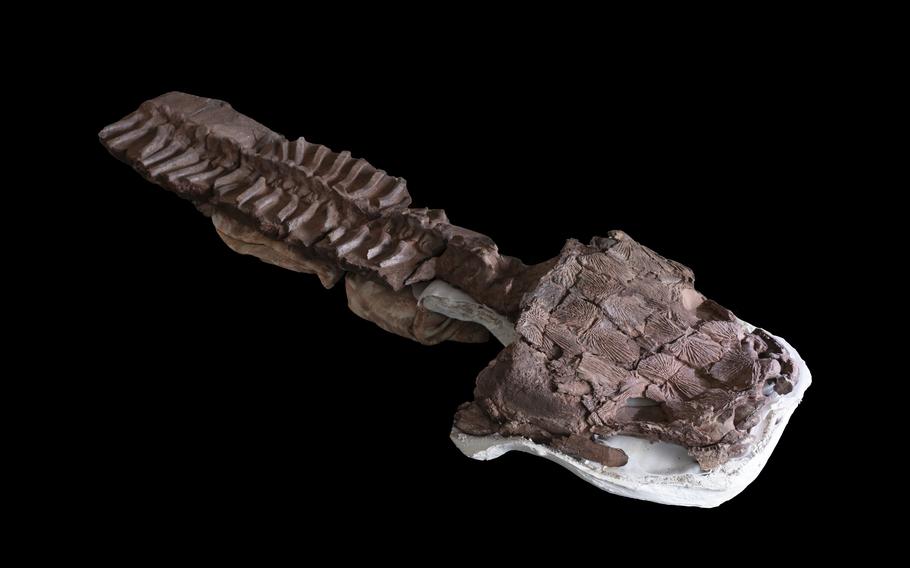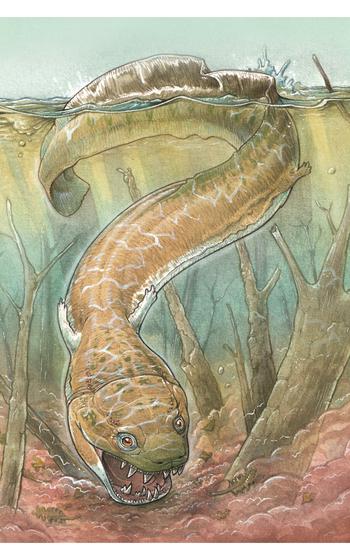
A nearly complete skeleton of Gaiasia jennyae in 2018. (Claudia A. Marsicano)
An apex predator with a 2-foot skull dominated by huge fangs, which lurked in fresh water in a time before the dinosaurs, has been discovered by a team of scientists.
A study published Wednesday in Nature names the species Gaiasia jennyae — a salamander-like tetrapod, or four-legged vertebrate, that lived in what is now Namibia. Its eight-foot body is the largest tetrapod yet found with digits, and it had a broad, flat, diamond-shaped head and enlarged, interlocking fangs, the authors wrote. The fossils suggest it was a suction feeder that also had a powerful bite for capturing larger prey.
“It has these huge fangs, the whole front of the mouth is just giant teeth,” study co-leader Jason D. Pardo, of the Negaunee Integrative Research Center at the Field Museum of Natural History in Chicago, said in a statement.
The research team, led by Claudia A. Marsicano of the University of Buenos Aires and Pardo, described it as a “new, exceptionally large, aquatic tetrapod” that “provides critical information about the tetrapods that inhabited high latitudes of Gondwana,” referring to polar regions of the prehistoric southern landmass.

An illustration of Gaiasia jennyae. (Photo by Gabriel Lio)
Anthony Romilio, a paleontologist at the Dinosaur Lab of the University of Queensland in Australia, who was not involved in the study, wrote in an email that it was a “fascinating discovery” that “challenges the belief that early land animals (tetrapods) were mostly found near the equator in coal-producing wetlands.”
“Gaiasia occurred much further south than its close relatives who lived in what is now North America and Europe,” he said, adding that the discovery “in the cooler, southern high-latitude regions of the ancient supercontinent indicates that early tetrapods were more widespread and adaptable to different climates than previously thought.”
Christian A. Sidor, a professor of paleobiology at the University of Washington, who was also not part of the research team, wrote in Nature that the discovery helped “fill a gap in the fossil record” because it was found in “a place and time that no paleontologist would have expected.”
The creature lived about 280 million years ago during the early Permian period, an age when there was a single continent, Pangaea — and about 40 million years before the first dinosaurs. It was the time of other predators such as Dimetrodon, a carnivore with a sail on its back, and Helicoprion, a sharklike fish with teeth arranged in a spiral.
Gaiasia jennyae was an “archaic” species even in its time, Pardo said, surviving about 40 million years after most of its relatives had died out, at the end of an ice age in which new animal lineages were forming.
It was named for the Gai-As Formation in Namibia where the fossils were found and in honor of paleontologist Jenny Clack, who died in 2020. The scientists pieced the information about the creature together from four specimens.